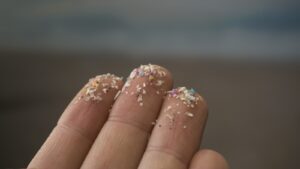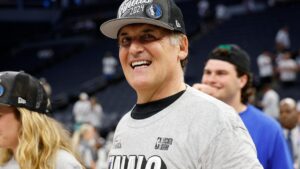Herring gulls have ruined many a harborside picnic, swooping down on unsuspecting people trying to enjoy a Cornish pasty, a sandwich or a bag of crisps.
But a study of the University of Exeter suggests that gull chicks prefer seafood even after being raised on a diet of the kind of scraps found around humans.
Scientists have studied herring gull chicks rescued after tumbling out of nests in roofs in towns across Cornwall. While in captivity, they were fed either a “marine” diet consisting mainly of mackerel, sprats and mussels, or an “urban” diet, mostly bread and cat food.
Every few days, the chicks were given a choice of four foods in different bowls to test which they preferred – and all strongly preferred fish. “When fish are available, they clearly prefer them,” says lead author Emma Inzani, from the Center for Ecology and Conservation at the University of Exeter’s Penryn Campus in Cornwall.
The team worked on the assumption that because the chicks came from rooftop nests they would be raised primarily on an urban diet. “Our results suggest that, even when raised on an urban diet of food found only around humans, these chicks are unlikely to forage for urban food as adults,” Inzani said.
Herring gulls are are often seen as a pest in urban areaswhere they forage for food and in bins, and sometimes take food from humans, but they are considered a conservation species and, like all wild birds, their nests and chicks are protected by law.
Inzani said a combination of reduced fish stocks in UK waters, together with abundant and easy access to food waste in towns, could mean it is not as profitable for gulls to spend a lot of energy going out to sea to forage.
In the study, 27 chicks had access to food all day, but half had urban food for 80% of the day and seafood for 20%, while the other half of the chicks received the opposite diet.
When all four foods were offered together on days five, 10, 15, and 35 of the study, both groups consistently preferred fish—and even those who tried the bread rarely ate much of it. A video released by the team shows a chick heading straight for the clams and gobbling them up, then stepping over the bread to get to the seafood, ignoring the cat food.
Another of the scientists involved in the study, Neeltje Boogert, said: “Animals can live in urban areas and exploit them for human food waste. However, this does not necessarily mean that they thrive or that they prefer this food, rather than making the best of a bad situation.”
The chicks were apparent orphans who either could not be reunited with their parents, re-nested or whose exact origins were unidentifiable. All were brought into the rehabilitation facilities, the majority from residential rooftops, within 24 hours of rescue from towns across Cornwall.
When released back into the wild, chicks in the land group were significantly lighter than their fish-eating counterparts.
The paper, published in the journal PeerJis titled: “Early-life diet does not affect preference for fish in herring gull (Larus argentatus).”



